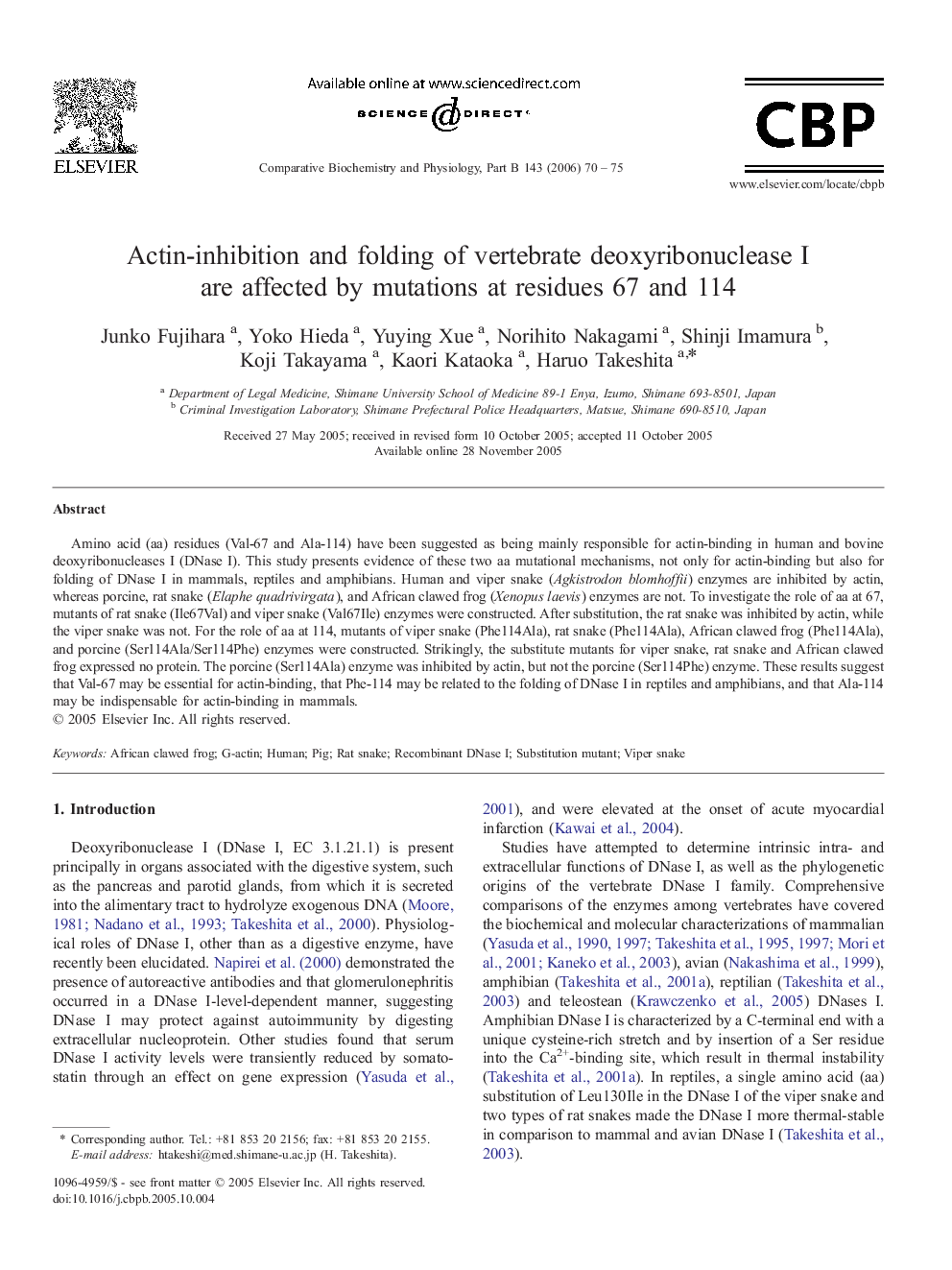| Article ID | Journal | Published Year | Pages | File Type |
|---|---|---|---|---|
| 1976445 | Comparative Biochemistry and Physiology Part B: Biochemistry and Molecular Biology | 2006 | 6 Pages |
Amino acid (aa) residues (Val-67 and Ala-114) have been suggested as being mainly responsible for actin-binding in human and bovine deoxyribonucleases I (DNase I). This study presents evidence of these two aa mutational mechanisms, not only for actin-binding but also for folding of DNase I in mammals, reptiles and amphibians. Human and viper snake (Agkistrodon blomhoffii) enzymes are inhibited by actin, whereas porcine, rat snake (Elaphe quadrivirgata), and African clawed frog (Xenopus laevis) enzymes are not. To investigate the role of aa at 67, mutants of rat snake (Ile67Val) and viper snake (Val67Ile) enzymes were constructed. After substitution, the rat snake was inhibited by actin, while the viper snake was not. For the role of aa at 114, mutants of viper snake (Phe114Ala), rat snake (Phe114Ala), African clawed frog (Phe114Ala), and porcine (Ser114Ala/Ser114Phe) enzymes were constructed. Strikingly, the substitute mutants for viper snake, rat snake and African clawed frog expressed no protein. The porcine (Ser114Ala) enzyme was inhibited by actin, but not the porcine (Ser114Phe) enzyme. These results suggest that Val-67 may be essential for actin-binding, that Phe-114 may be related to the folding of DNase I in reptiles and amphibians, and that Ala-114 may be indispensable for actin-binding in mammals.
